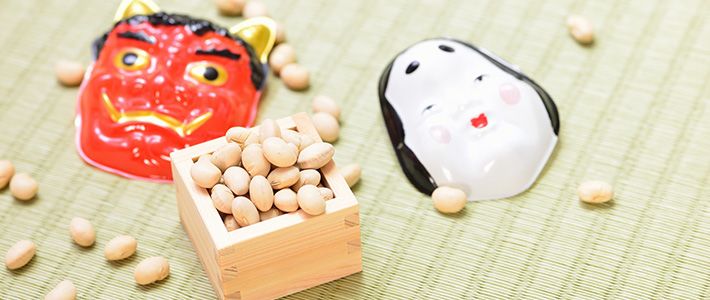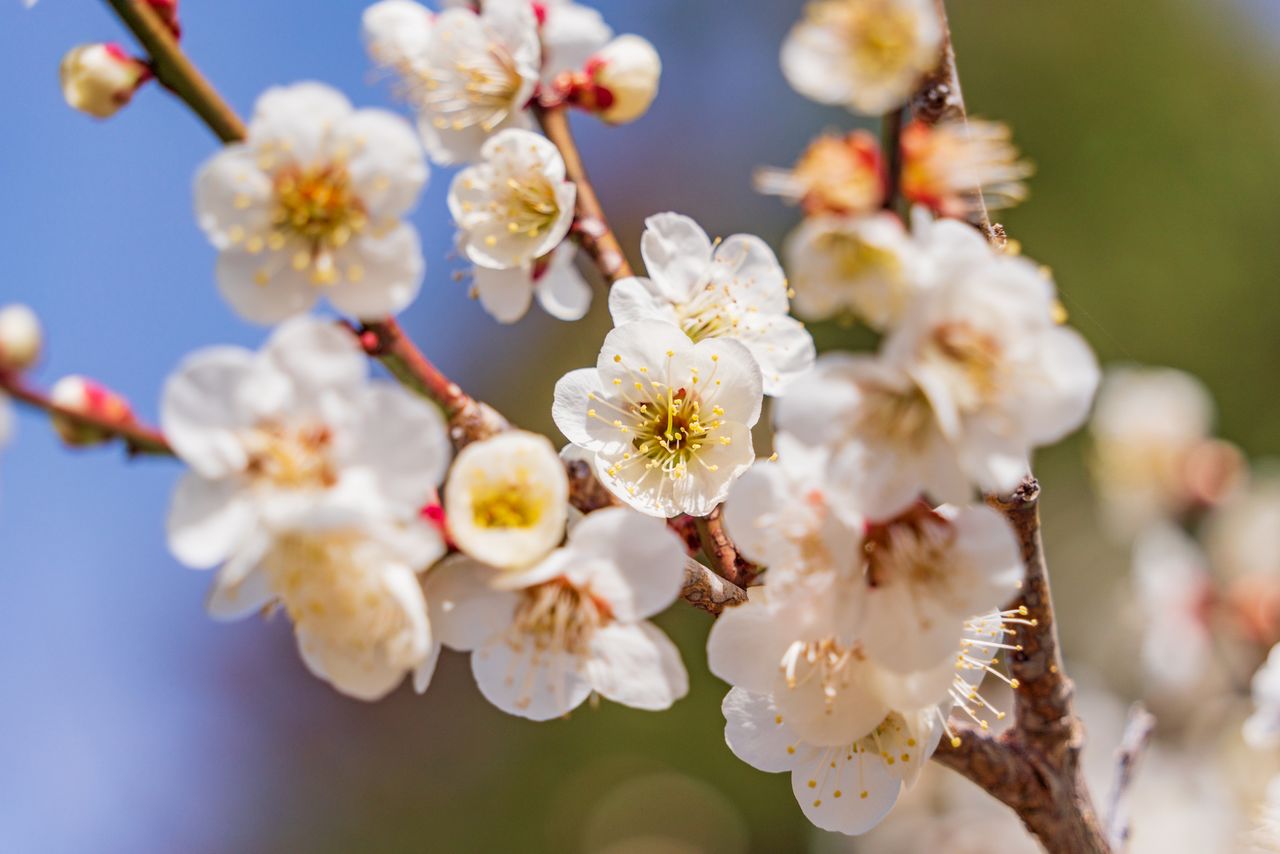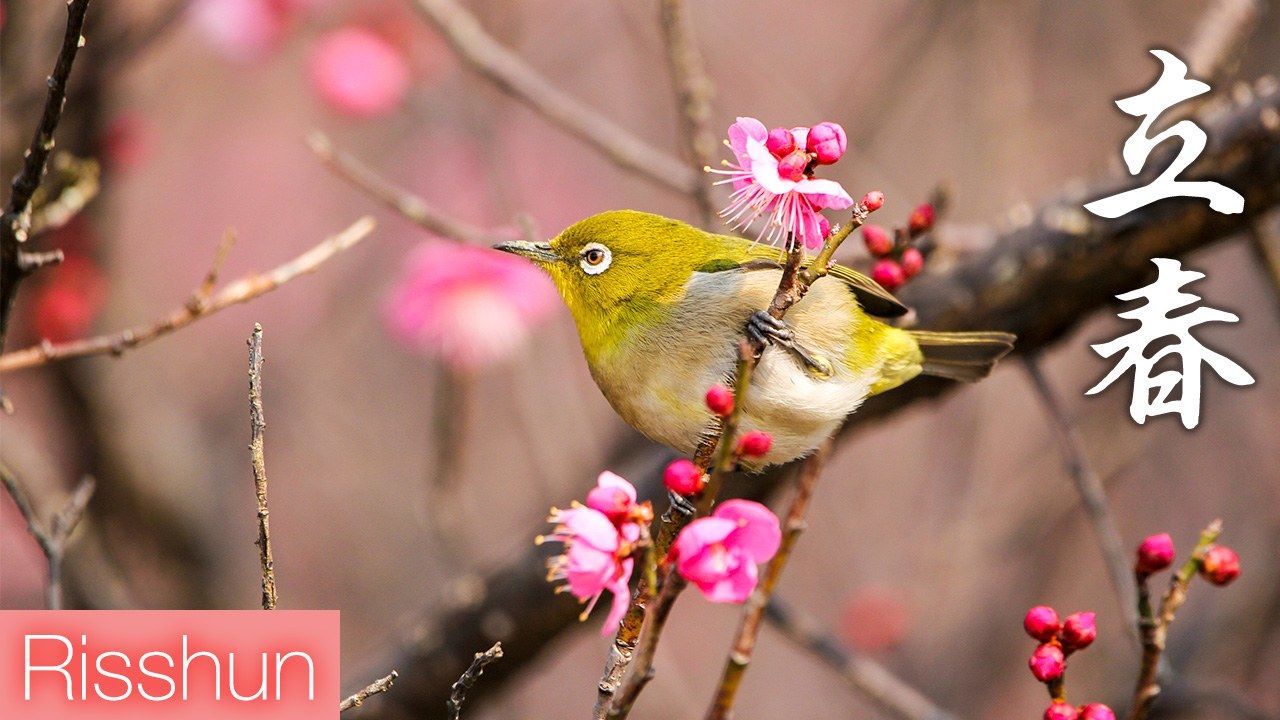
Risshun (Beginning of Spring)
Culture Lifestyle- English
- 日本語
- 简体字
- 繁體字
- Français
- Español
- العربية
- Русский
Japan’s 24 solar terms commence with Risshun (the beginning of spring), on approximately February 4 on the modern calendar. The day before is Setsubun, marking the change of seasons, and known for various traditions to ward off evil, including throwing roasted soybeans, and attaching a grilled sardine head outside the house. Although it is still bitterly cold, sprouts are appearing, and this time is seen as a demarcation in the year. Flower buds are swelling on the trees, and despite the cold, we sense the first signs of spring.
This article will look at events and natural phenomena in the period roughly from February 4 to 18.
Warm spring winds that blow from the east are called kochi. In New Year’s cards, people use expressions such as shinshun (new spring) and hatsuharu (beginning of spring), because Risshun was formerly New Year’s Day. Also, there is a custom of counting 88 days from Risshun to calculate the start of the green tea harvest, on Hachijūhachiya (around May 2).
Haru ichiban
Strong winds, known as haru ichiban, blow from the east and south from Risshun through to the spring equinox, heralding the arrival of spring. These warmer winds are also notably moister than the winter air.
Uguisu
The uguisu or bush warbler, the herald of spring, is known for its distinctive call: hōhokekyo. This is referred to poetically as hatsune (the first note), a kigo or season word used in haiku, waka, and the tea ceremony to allude to spring. The uguisu is viewed as “crossing from valley to valley” as it hops from branch to branch, singing kekyo, kekyo, kekyo.
Blooming of Plum Blossoms
Japanese has various metonyms for plum blossoms, including harutsugegusa (“grass that heralds spring”), kazamachigusa (“wind-waiting grass”) and nioigusa (“fragrant grass”). The season begins with white plum blossoms, resembling popcorn, followed by crimson and scarlet blossoms, which exude a faint aroma, unlike cherry blossoms. In modern times, hanami (“flower viewing”) refers to cherry blossoms, but in the Nara period (710–794), it was associated with plum blossoms, brought to Japan by missions to Tang China. The eighth-century Man’yōshū anthology contains 43 poems about cherry blossoms, but 110 about plum blossoms. At the time, aristocrats held poetry-reading plum blossom viewing parties, the predecessor to modern hanami.
Plum Festival
Plum orchards across Japan stage festivals from mid-February to late March. Kairakuen in Mito, Ibaraki Prefecture, boasts 3,000 plum trees of 100 varieties, which are lit up in the evenings.
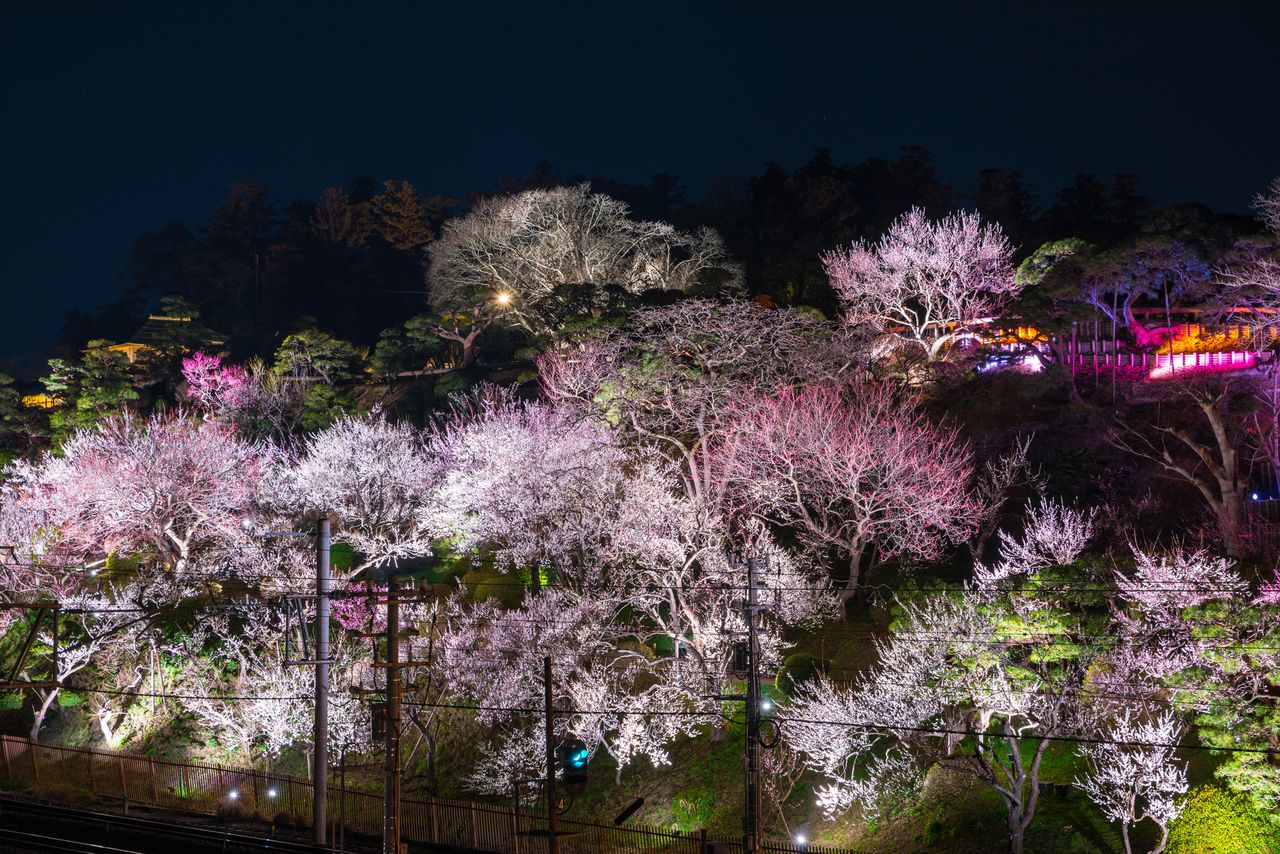
The plum blossom festival at Kairakuen is lit up at night. (© Pixta)
Umeboshi
Salted pickled plums, or umeboshi, have a distinctive mix of sour and salty tastes. They are also said to relieve exhaustion, and aid the gastrointestinal and respiratory systems.
Valentine’s Day
February 14 was originally a festival honoring Saint Valentine, an early Christian martyr. In Japan, the tradition developed for women to express their love for men, particularly through gifts of chocolate, in a custom popularized by chocolate manufacturers.
Yukimagusa
Some seasonal edible wild plants are called yukimagusa (herbs peeking through the snow). The fuki (butterbur) is the first to bud in spring. The bittersweet plant is often served as tempura, and is popular fare.
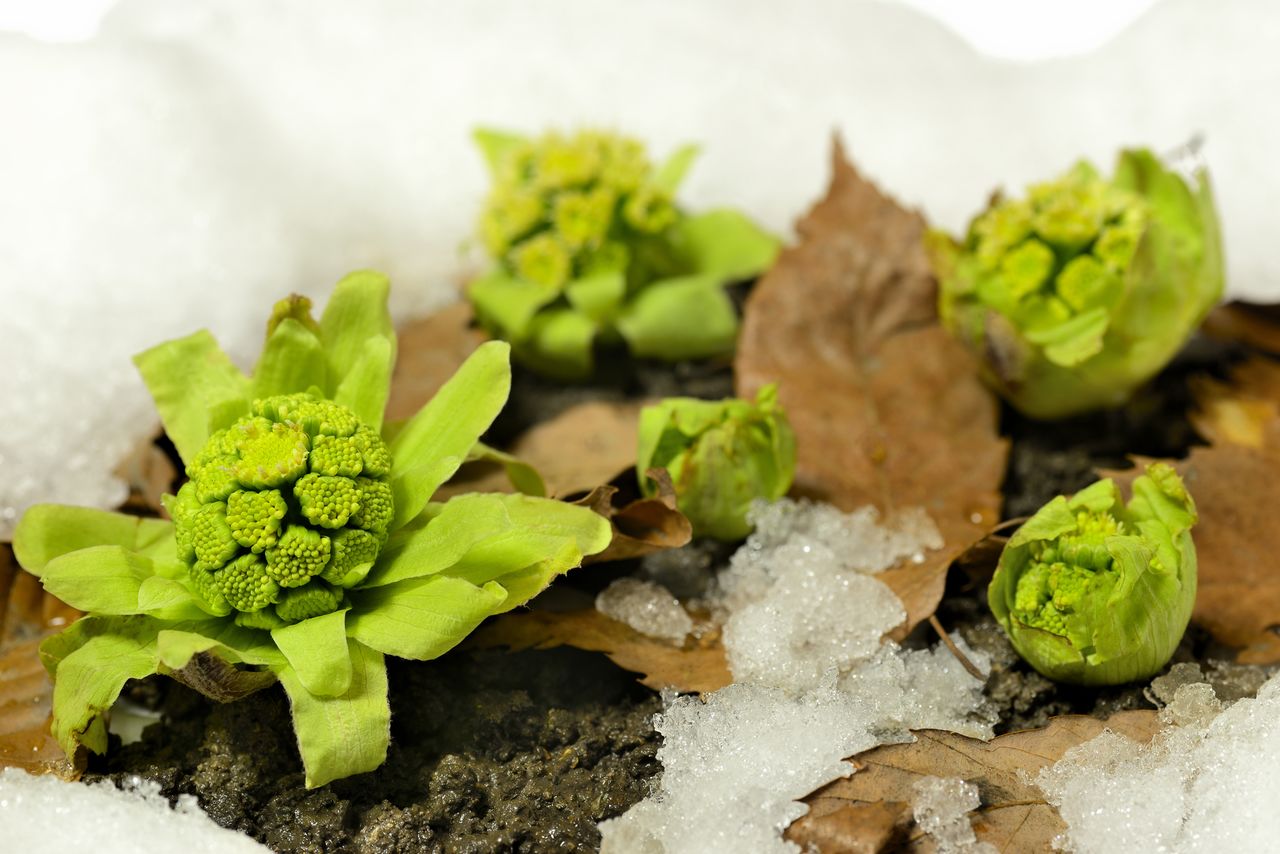
Fuki buds poking out through the snow. (© Pixta)
Pacific Herring
Nishin, or pacific herring, are also considered a harbinger of spring. One way to enjoy them is as sushi: fatty nishin sushi is a local specialty of Fukui Prefecture. Herring roe is often included in osechi ryōri, Japan’s New Year cuisine, due to its association with fertility.
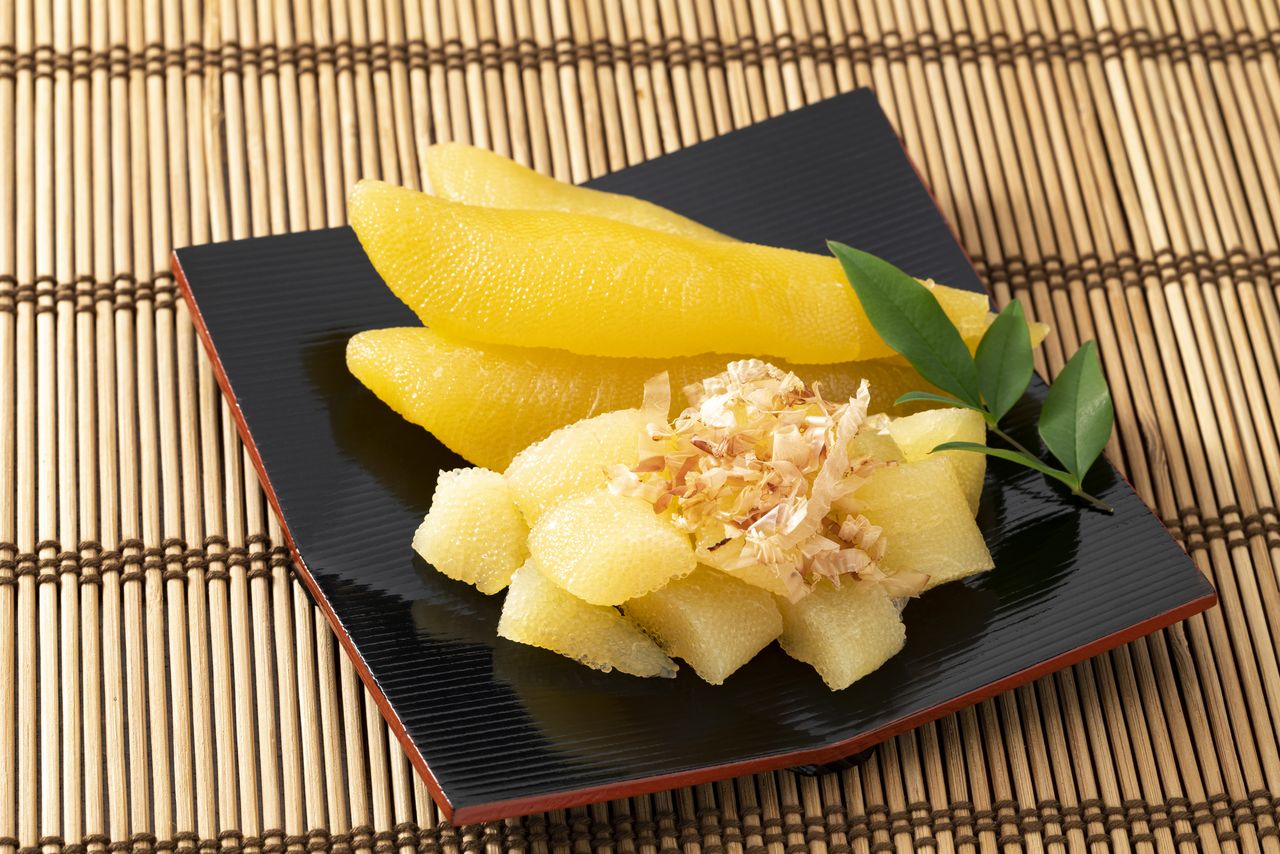
Herring roe, a popular feature in New Year’s cuisine.
Seasonal Fish
The Japanese archipelago has an abundance of forests, streams, gorges, rivers, and lakes. Yamame (cherry salmon) and amago trout are protected from October, their breeding season, but the fishing season opens from February or March, attracting anglers to mountain streams in droves. Along with char (iwana), these river fish are popular salted and grilled, or deep-fried. Kotsuzake, broiled char in hot sake, is a unique drink of the season.
(Translated from Japanese. Supervised by Inoue Shōei, a calendar researcher and author, Shintō priest, and guest lecturer at Tōhoku Fukushi University. Banner photo: A Japanese white-eye amongst plum blossoms. Its yellow-green plumage and white-rimmed eyes make it a delightful herald of spring. © Pixta.)
